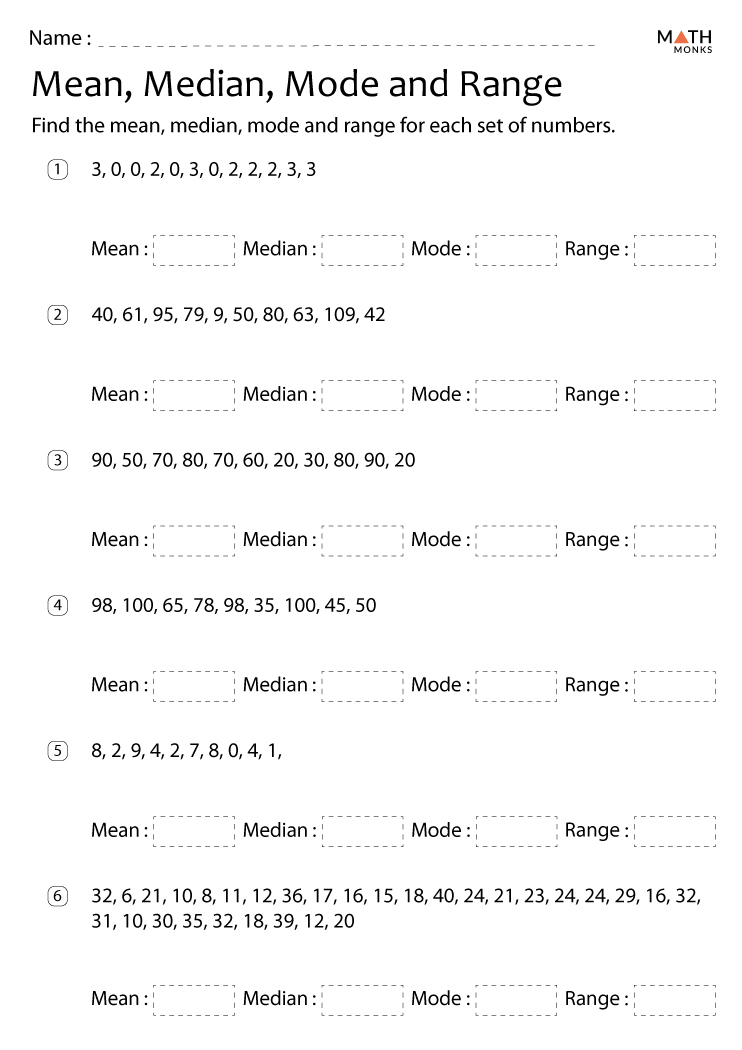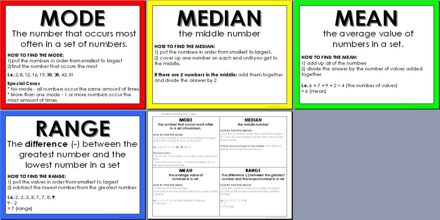


NumPy: A fundamental package for scientific computing with Python.Pandas: A powerful data manipulation and analysis library for Python.There are numerous libraries and packages available to aid data analysis, including: SQL: Structured Query Language is used for managing and querying relational databases. R: A popular language for statistical computing and graphics, widely used in academia and data science. Python: A versatile programming language with rich libraries such as Pandas, NumPy, and scikit-learn for data manipulation, analysis, and machine learning. It helps in understanding network structures, influence patterns, and identifying key nodes or influencers. Social network analysis examines the relationships and interactions between individuals or entities within a network. It is useful for understanding trends, seasonal patterns, and making predictions in fields such as finance, economics, and weather forecasting.
#Mean median mode range online workspaces series#
Time series analysis focuses on analyzing and forecasting data points collected over time. Text mining and natural language processing techniques are used to extract valuable information and insights from unstructured textual data, such as sentiment analysis, topic modeling, named entity recognition, and text classification. Text Mining and Natural Language Processing: Techniques such as classification, regression, clustering, and recommendation systems are widely used in various industries.Į. Machine learning involves building models that can learn from data and make predictions or decisions without explicit programming instructions. Charts, graphs, maps, and interactive dashboards are commonly used to visually represent data. Techniques such as hypothesis testing, confidence intervals, and regression analysis fall under this category.ĭata visualization techniques transform complex data into graphical representations, making it easier to understand and identify patterns. Inferential statistics allows us to draw conclusions and make predictions about a population based on a sample. It provides a basic understanding of the data's central tendency, variability, and distribution. Descriptive statistics involve summarizing and interpreting data using measures such as mean, median, mode, standard deviation, and percentiles.

Drawing conclusions and making recommendations.The data analysis process typically involves the following steps: It helps in improving operational efficiency, identifying market trends, predicting customer behavior, optimizing processes, and much more. It involves various techniques and tools to extract meaningful insights from structured, unstructured, or semi-structured data.ĭata analysis is crucial for businesses, researchers, and organizations to gain valuable insights, identify patterns, detect anomalies, and make data-driven decisions. Data analysis is the process of inspecting, cleaning, transforming, and modeling data with the goal of discovering useful information, drawing conclusions, and supporting decision-making.Text Mining and Natural Language Processing In this article, we will explore the fundamental concepts of data analysis, popular analysis techniques, and provide a list of valuable resources to enhance your data analysis skills. With the exponential growth of data, it is essential to have a solid understanding of data analysis techniques and the tools available to process and interpret data effectively. Python Dictionaries Access Items Change Items Add Items Remove Items Loop Dictionaries Copy Dictionaries Nested Dictionaries Dictionary Methods Dictionary Exercise Python If.Else Python While Loops Python For Loops Python Functions Python Lambda Python Arrays Python Classes/Objects Python Inheritance Python Iterators Python Polymorphism Python Scope Python Modules Python Dates Python Math Python JSON Python RegEx Python PIP Python Try.Data analysis plays a crucial role in extracting meaningful insights and making informed decisions across various fields.


 0 kommentar(er)
0 kommentar(er)
